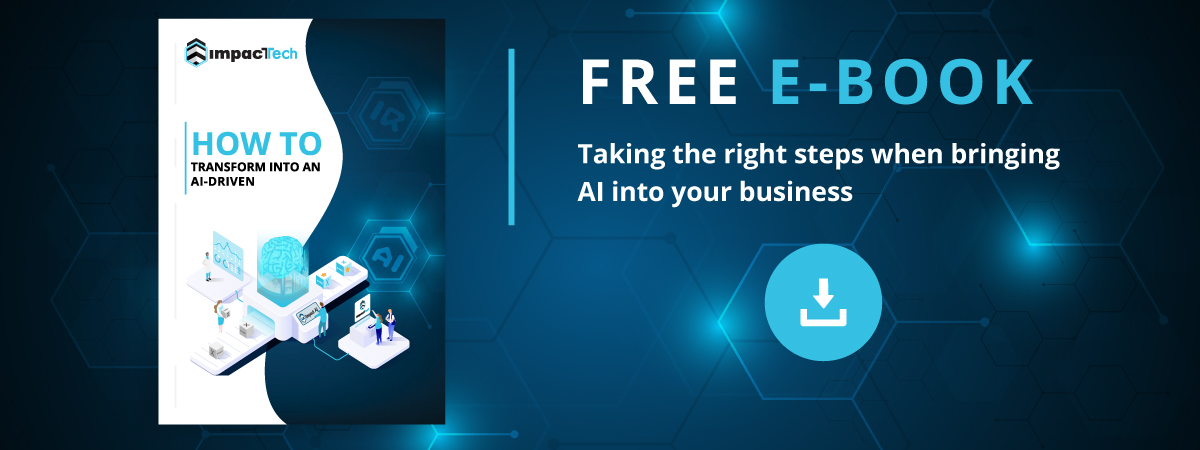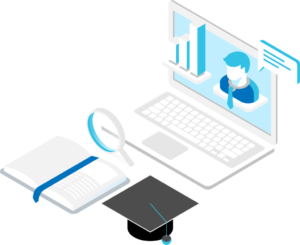
How to transform into an AI-driven business
Taking the right steps when bringing artificial intelligence (AI) into your business will achieve a significant competitive advantage and all the benefits digital transformation offers
If your business hasn’t already taken the first steps to becoming AI-driven it needs to start today. AI’s effect on the global economy is going to be enormous. A Harvard Business Review report claims $13 trillion over the next decade – far more than JP Morgan’s 2017 estimate that GDP will increase by more than $1.1 trillion by 2027. Most recently, PwC calculate that AI will add $15.7 trillion to the worldwide economy by 2030.
The growing estimates demonstrate that AI will significantly influence future economic growth.
But how? Its the relationship between AI and data.
AI is highly efficient at processing and analysing data. It does it far more quickly than a human can and allows your business to benefit from Big Data analysis. This augments a human’s ability to make better decisions by leveraging previously untapped data sources.
AI increases the Business Intelligence and ensures future competitiveness. It can transform both the client and employee experience by simplifying and automating processes.
AI can also transform a wide range of revenue-generating as well as middle- and back-office operations.
An MIT Sloan Management Review and Boston Consulting Group study further underlines AI’s benefits. 84% of respondents expect to sustain or achieve a competitive advantage by using AI to increase Business Intelligence. 83% have made AI a business priority and 75% believe the technology will enable them to move into new businesses.
But viewing AI as a plug-and-play technology with immediate returns is a mistake. The opportunities AI offers requires changes to how most businesses work. There needs to be a shift away from focussing on distinct business problems, like improving customer segmentation, to bigger challenges like optimising the entire customer journey.
To get the most out of AI requires adapting the company’s culture as well as educating everyone.

THE ‘MUST DO’ LIST FOR AI SUCCESS
Firstly, interdisciplinary collaboration is important and creating cross-functional teams is essential. A mix of skills where operational people work alongside analytics experts and data scientists ensures the biggest impact.
Secondly, move to data-driven decision making. Augmenting judgement with an algorithm’s recommendations produces better answers than a machine or human can make individually.
But taking these steps requires the biggest cultural change. AI-driven enterprises must abandon the traditional top-down approach to decision making and trust the recommendations made by the neural networks. If an employee still needs approval before acting on a recommendation made by tools driven by Machine Learning the impact is diluted.
Thirdly, be adaptable and experiment with your AI strategy. Insisting that a business tool has every desired feature before deployment reduces long-term impact.
AI applications rarely provide all the desired functionality in the first iteration. The test-and-learn approach generates early user feedback which allows correction of minor issues before they become costly problems. Development speeds up and reduces the distance to reaching a minimum viable product (MVP).
Identifying unique barriers to change is also essential.
Some obstacles, like workers’ fear of losing their job to new technology, are common.
However, there are companies with characteristics that lead to resistance, for example, those that use relationship managers. They may believe that they are already in tune to their customers’ needs and decide to ignore the tailored recommendations made by an AI-driven tool.
Also, there are managers at large companies that believe their status is based on the number of people they oversee. They may object to the decentralised decision making or reduction in reports that AI enables.
Leaders must prepare their workforce to make the change. But most importantly they too must prepare. Many failures are because of a lack of understanding about AI among senior executives.

LEARN FROM OTHER AI-DRIVEN COMPANIES
The success of other businesses in implementing AI is highly informative.
Seeing how other industries align AI initiatives with their culture helps to create a road map to success.
At one financial institution with a strong emphasis on relationship banking senior leaders chose to highlight AI’s ability to enhance ties with customers. The bank created a booklet for relationship managers. It showed how combining their skills with AI’s recommendations improves customers’ experiences and increases revenue.
Their AI adoption program also included a sales contest. The agents with the most conversions using the AI-powered tool were showcased in the CEO’s monthly newsletter to employees.
Another example to draw from is in telecoms. A provider implemented a new AI-driven CRM in its call centre. In addition to investing in AI model development they also helped their employees’ transition to the new approach.
Previously, employees would react to customers calling to cancel their service. Now they proactively reach out to customers identified as at risk of defection. The CRM also uses Machine Learning to generate recommendations on new offers they are likely to accept.
The employees got training in skills on how to close sales. Coaches and managers listened in on their calls, gave individualised feedback, and updated the training materials and call scripts. Thanks to this unified approach the new CRM reduced churn by 10%.
In both examples employees were given an incentive to use the tools and in return each company saw an increase in Business Intelligence.
Automated processes that don’t need human involvement deliver returns more quickly than, for example, customer service. Achieving a view of customers that is detailed enough to do micro-segmentation requires setting up multiple sales and marketing initiatives. Expect targeted offers to deliver far sooner than the entire suit of capabilities to achieve their full potential.

EDUCATE EVERYONE IN YOUR BUSINESS ABOUT AI
Leading by example is as important today as it was when first identified as a key to success. For successful AI adoption at your business everyone needs to be educated on it from the very top down.
Firstly, senior execs need a high-level understanding of how AI works to better identify AI opportunities. Marrying their industry experience with knowledge about AI helps them to estimate the impact on workers’ roles more easily. This will also help them to identify barriers to adoption and better inform talent development requirements and guide the cultural changes needed.
Secondly, strategic decision makers, like marketers, may require high-level training using real business scenarios that show how the tools improve decision making about advertising campaigns.
The educational effort in these two layers of management has a direct influence on the increase in the overall Business Intelligence in the company. However, it’s the pace at which that knowledge is applied that dictates the speed at which Business Intelligence increases.
Thirdly, for front-line workers a general introduction to the tools is enough with on-the-job training in how to use them.
AI transformations can take months to complete which may result in a loss of momentum during implementation especially if results are not immediate. To prevent this, leaders must actively encourage the new ways of working.
Early iterations rarely work out exactly as planned. When that happens, leaders need to highlight what was learned to drive improvements in the next iteration.
Finally, reinforcement of why AI is being used will complete successful implementation. Comparing the results of decisions made with and without AI encourages greater use of the tools and offering acknowledgement to employees who drive implementation success will encourage more of the workforce to adopt the new tools completely.

ARE YOU AI READY?
Adopting a new technology is different for every business. Each has its unique goals, strengths and weaknesses to consider before taking their transformation journey.
However, there are some general considerations that are consistent for most. Audit the existing technology and talent pool within your business to decide if it meets the needs of your AI system. Look at your existing data points and your data science expertise. Consider bringing in products and solutions that broaden your ecosystem.
After deciding where AI fits into your business it will be clearer if and where there are gaps in existing tech and expertise that need to be filled. One option is to invest in a startup that has successfully developed their AI tech to augment existing resources. Alternatively, identify vendors to collaborate with or to co-invest in building market-ready applications.
The objective is to take actions that promote scale in AI as this brings its own benefits. Moving towards interdisciplinary teams brings together varied skills and the user input needed to build the most effective tools.
Over time, working in cross-functional teams creates new perspectives and a shift away from trying to solve individual business problems and towards reimagining business and operating models. This change dictates how far the company pushes the needle on Business Intelligence.
Organisational hierarchies become flatter as decision-making becomes machine assisted which encourages further collaboration and even bigger thinking.
Leaders will play a highly critical part in the transformation process especially when overseeing how roles and workflows change, and the culture adapts to the new applications. However, every business that successfully implements AI throughout their business will find themselves at a significant competitive advantage whereby their employees and machines outperform their competition who rely on humans or machines working on their own.
